Late last year, Jeff Purdy, a Councillor with Acadia First Nation, was with some Parks Canada staff on his way back in a helicopter from a backcountry trip to Dennis Boot Lake camp, the site of one of Nova Scotia’s last remaining old growth hemlock forests. The remote camp was serving as the storage hub for the equipment being used in the project to chemically inject, and protect, more than 1,000 old growth hemlock trees from the hemlock woolly adelgid, an aphid-like insect that can kill a tree in 3-5 years. Given that the majority of what little old growth forest remains in the province is hemlock dominant, saving the old trees has a particular urgency to it.
But as the helicopter neared Lake Rossignol, Purdy had another pressing concern on his mind, and asked the pilot if he could take a little detour and fly over the area just west of the lake.
“I’d like to have a look to make sure everything’s ok around there,” Purdy told the pilot. As it turned out, his worry ended up being justified.
As I’ve written elsewhere, Lake Rossignol isn’t really a lake at all. In the 1920s when the Mersey Paper Company dammed the Mersey River 30 kilometres upstream at Indian Gardens to power its pulp and paper mill, it flooded an area that included a dozen small lakes and created Rossignol, a reservoir and the largest fresh water body in the province.
The western side of the lake is smack dab in the middle of the Mi’kmaq heartland: the beating, life-giving, sylvan domain of Purdy’s ancestors. Today, it bears little resemblance to the place Purdy remembers as a child. The mainland moose are nearly disappeared; the lakes and rivers are being invaded by the voracious, predatory, non-native chain pickerel, dubbed the “freshwater crocodile;” and the landscape itself is now mangled and scarred by government-sanctioned industrial logging and fragmented by roads.
On this day, as they were flying over the area, the pilot said, ‘Oh, it looks like someone had a fire fire-pit there,’ and Purdy replied, ‘Wait a minute, that's not a fire pit.’ Purdy asked the pilot to land the helicopter so he could get a better look.
“When I went over and looked, it wasn’t a fire pit. Someone had been digging, someone had been looting, looking for Mi’kmaq artifacts.”
“The west side of Rossignol is very, highly culturally sensitive, and a lot of people know it,” says Purdy, who is also the archaeology, culture and heritage rep for the Mi’kmaq Grand Council.
“Collectors don’t realize they’re stealing significant artifacts, some of them from ancient burial sites.”
Looting of Mi’kmaq artifacts, west side of Lake Rossignol, 2022. (Top) Four-wheeler tracks can be seen through the bogs and sensitive areas, driving across archaeological sites. (Bottom) The dug holes are sign of looting. Photos courtesy: Jeff Purdy.
In a telephone interview, Purdy tells me that when artifacts are taken, a spiritual connection to the traditional teachings is also taken away, as well as any scientific value from an archaeological perspective.
They’re stealing, expropriating cultural artifacts that are very significant. Some of the artifacts do come from burial sites and that’s no different than someone going into a graveyard today and taking something. The only difference is some of the Mi’kmaq burial sites are 5,000 years old.
Purdy says the motivations for looting vary. Some may be selling the artifacts, though he says, “they’re not going to get rich doing that.” Some people just take the items and “throw them in a box,” as memorabilia.
“A lot of people are just looking for the arrowhead, for something beautiful. Or they know what a flake is, or a chip, the little pieces of stone that have been broken off when making a projectile point or spear or something – even those are artifacts.”
But some people—and Purdy knows a few—have significant collections that date back to when their families had a connection to the Mi’kmaq through a special friendship with a hunting or fishing guide who shared stories with the family and took them to ancestral areas where artifacts were present.
“They would collect the artifacts and they would share stories back and forth. Some of these families know where the artifacts were collected, and that’s a great piece of information moving forward because there could be a lot of spots that may not have been recorded. So that family’s story of their connection to the Mi’kmaq needs to be told.”
Purdy says there are a lot of private collections around and some of these artifacts are 10,000 years old. “We have artifacts that are older than the pyramids. That's a very significant piece of our history being stolen.”
Purdy says he doesn’t know whether the looters at Lake Rossignol are Indigenous or not.
“Even some Mi’kmaq will say, ‘Well, it's my ancestors, I have a right to collect.’ Well at the end of the day, I understand what they're saying but it's still stealing because it's not housed properly or looked after properly. It gets thrown in a box somewhere and thrown in someone's closet.”
Every lost artifact contributes to the erosion of an ancient culture.
“This culture of collecting is really looting. Every time you take artifacts away, you're actually stealing my culture. It’s very disheartening, and it’s illegal.”
Jeff Purdy standing under the canopy of the Sixth and Coade Lakes Nature Reserve, a 125-hectare forest containing mature old-growth hemlock forests. Photo: Linda Pannozzo
‘Collecting’ is looting and can come with a hefty fine
In the late 1980s the province brought in a piece of legislation aimed at protecting archaeological, historical, and palaeontological sites and remains, including those found underwater. The Special Places Protection Act makes the removal of cultural materials from archaeological sites illegal, unless a heritage research permit has been issued, with fines up to $10,000 for an individual and up to $100,000 for a corporation.
According to Department of Communities, Culture and Heritage media spokesperson, Susan Mader Zinck, police (RCMP and municipal) enforce the legislation, but no one had been fined under the Act in the last ten years.
Mader-Zinck says “enforcement can be challenging due to the broad distribution of sites across the province, including remote areas,” so a “more effective means of preventing illegal looting is through educating the public.”
“Many people are not aware of the rules concerning searching for heritage objects and sometimes unknowingly uncover or collect objects. Once made aware of the law, citizens often are pleased to donate the items. The Nova Scotia Museum has accepted many heritage objects from the public collected from Nova Scotia’s landscape.”
When it comes to whether artifacts should remain in the ground or be displayed, Purdy says it’s a “catch 22.”
“We prefer they be left alone. It's like a species at risk. Archaeology is a non-renewable resource. Once you take it, it's gone. So, if we have to take it out for protection, then we'll take it.”
For instance, if a burial site is discovered during a construction project, it’s an “automatic stop, there’s no more digging,” explains Purdy. Telltale signs such as red ocher or certain types of stone, like slate are “red flags,” he says, and the industry or the proponent would be made to move or readjust the footprint of their project.
“Normally, the artifacts go to the museum, unless it’s something very significant culturally, and one of our elders says they don't want them going into the museum because they're too culturally important. Then the community would designate somebody to hold on them and care for them.”
Porcupine quillwork by Mi’kmaw women displayed at the Millbrook Cultural and Heritage Centre. The eight-pointed star (centre) is the Mi’kmaw symbol for the sun. According to the Centre, “some of these elaborate and symmetrical quill mosaics may have conveyed traditional cosmologies in the same way as Navaho sand-paintings or Tibetan sand-mandalas do,” but “sadly, much of that knowledge is now lost, and may designs cannot be interpreted today.” Photo: Linda Pannozzo
‘A very long journey’
Two minutes and 36 seconds was all it took for the former Liberal MP Bill Casey to convince the House of Commons to pass his private member’s bill, C-391, the Indigenous Human Remains and Cultural Property Repatriation Act. In his 2018 speech, Casey talked about how he had been to the Millbrook Cultural and Heritage Centre , which is in his riding, and saw a display case with life-size images of an elaborate Mi’kmaw man’s ceremonial costume—an intricately embroidered jacket, leggings, pouch, moccasins, broach, and a pipe—all in pristine condition.
A news report at the time described how the items were commissioned in 1843 by the British army officer and writer, Samuel Huyghue, and were, at the time Casey tabled his Bill, sitting in a drawer at a museum in Melbourne, Australia.
In an interview with the Quaking Swamp Journal, Casey, who is now retired but maintains a Web site, says that almost immediately after his speech, the Australian embassy contacted him, and he put them in touch with Heather Stevens, the Manager and Senior Heritage Interpreter at the Millbrook cultural centre. Stevens was the one who first showed Casey the display case, which inspired him to draft the bill. She was also one of the first people asked to read over bill C-391, giving it the thumbs up. Stevens also had the opportunity to speak about its importance in the House of Commons.
In March of this year, Stevens made the momentous journey to Australia to repatriate the regalia “on behalf of Mi'kma'ki,” she says.
“When I walked in the [museum] door and saw the case where the regalia was displayed, it was like a feeling of completion,” Stevens recounts. “I did what I set out to do, and knew the regalia was finally coming home.”
“But I also felt emotional because it’s been a long, long journey.”
In an interview, Stevens tells me that throughout the process there has been “no support” from her community… no one from Millbrook has been up to see the regalia.”
When I ask what she attributes the lack of interest to, she doesn’t mince words: “Honestly, we’re too white. We’re native, but we’re white. I’m not, but a lot of the community is. They’ve lost their culture, lost touch with our history and our past, and are focused on money and becoming bigger and better.”
“Our history was taken from us, you know, the residential schools and the sixties scoop and everything that happened to us. The history is washed.”
Stevens says that while there has been some speculation that the regalia was originally made for a Chief, and was looted, it’s very unlikely. “It’s very plain, very basic, there’s no way that was for a chief.”
“It was either commissioned or it was gifted,” she explains.
While anyone who is First Nations can arrange to see the regalia at any time, an official unveiling for the general public will be held on June 21st.
Images of Mi’kmaw regalia, that were donated to a museum in Melbourne, are displayed at the Millbrook Cultural and Heritage Centre. In March 2023, Heather Stevens travelled to Australia to repatriate the regalia on behalf of Mi'kma'ki. There will be an official unveiling on June 21st but the items can be seen at any time by members of First Nations. Photo: Linda Pannozzo
Bill is not a ‘polished gem’
While—according to Casey—bill C-391 was “an example of how Parliament can work,” and would have “set up a process whereby artifacts could have been more easily returned to First Nations groups,” it didn’t end up making it through the Senate.
In a telephone interview, Casey says he doesn’t remember why it was that the parties couldn’t agree, but “it got stuck in the Senate and died.”
“It was just an argument the Senators were having themselves and it died on the order papers.”
On May 30, 2019, upon Second Reading of the bill, Senator Dan Christmas—from the community of Membertou and the first Mi’kmaw ever to be appointed Senator—moved to adjourn the debate on the bill.
Christmas retired in early 2023, and is no longer in the public sphere.
Stevens says she spoke to Christmas after the bill was adjourned and he said, being the only Indigenous person in the Senate, he “was feeling pressured by a lot of organizations to push it through but the government had apprehensions about how much involvement it meant for the government,” she explains.
The bill’s aim was to establish a framework through which any First Nation, Inuit or Métis community could repatriate cultural property or human remains—which might have been taken away for scientific study—and also to encourage those in possession of Indigenous cultural property to return it. In other words, small First Nations’ bands, like Millbrook, would have support and be able to get help if it wanted to get back one of its original artifacts. But, Stevens explains, “the government didn't want to be the backbone of the template,” or be financially responsible for providing money for repatriation efforts.
A few months before Christmas adjourned the bill, a debate in the House of Commons provides some clues about the kinds of “pressures” or concerns that may have been brought to bear on the Senator, from both sides of the political spectrum.
Martin Shields, a Conservative MP from Alberta, said he supported the bill and that it was “well-intentioned,” but that it could have been “improved” by including that the feds “help with the cost to preserve and maintain aboriginal artifacts.” The preservation of historical objects and the operating costs would pose a challenge to smaller museums, he argued. “It was a mistake not to include this explicitly in the bill.” Shields also pointed out that the bill could have “unintended consequences for aboriginal artists and creators.”
I own several pieces of tremendous artwork produced by Siksika artists who live in my riding. This industry yields great economic benefits in many indigenous communities and helps foster appreciation for their cultures. It should not be jeopardized in any way.
The bill must not dampen enthusiasm for the incredible work produced by aboriginal artists by suggesting one's purchase might someday be repatriated. That would be a very unfortunate, unintended consequence.
Conservative MP, Steven Blaney from Quebec pointed out that concerns were put forward by the Canadian Museum of History—which has more than 2,000 historical and contemporary artifacts in its collection—but that these were “rejected” in Committee. Blaney stated that while he supported the bill, and that it was “one of the many steps we must take toward reconciliation,” he wanted reassurances that it would “not interfere with private property rights” or force anyone to return “legally acquired artifacts.”
Blaney said he supported the spirit of the bill but that it “remains vague, which means we are not sending the Senate a polished gem, but merely an intention that needs to be clarified.”
Concerns were also raised by NDP Member of Parliament, Alistair MacGregor from British Columbia, who argued the language wasn’t “forceful” enough.
We know that most indigenous ethnology collections found in Canadian and foreign museums in universities today were taken by missionaries, government agents, amateur and professional collectors and anthropologists and that that was done without the informed or prior consent of the people. It was theft, and in many cases the stealing of these tools and ceremonial devices was a way to crush their culture, to try to take away their traditions and try to subsume those nations into the white person's culture, as we have tried to do so many times in this country… [In] the bill we still see words like ‘encourage,’ ‘support,’ and ‘provide.’ We could have used more forceful language to bring this bill into harmony with the United Nations Declaration on the Rights of Indigenous Peoples.
In the end, the unanimous passing of the private member’s bill in the House of Commons seemed to be more of a symbolic gesture—a recognition that steps needed to be taken by the feds to achieve reconciliation—and that helping Indigenous communities repatriate culturally significant artifacts and human remains was a meaningful and necessary part of that process.
But the bill clearly needed more work, which arguably should have been done before it got to the Red Chamber.
Stevens and Casey both express hope that someone might re-introduce the bill at some point. But even in the absence of legislation, the regalia from Australia was brought home.
“This was the first international repatriation to Canada, and having that precedent set here in Millbrook, it’s a big thing,” says Stevens.
Jeff Wilmot, Senior Heritage Interpreter and Heather Stevens, Manager and Senior Heritage Interpreter, Millbrook Cultural and Heritage Centre. Photo: Linda Pannozzo
Another repatriated collection soon to be unveiled in Millbrook
Trevor Bebb, originally from Wales, immigrated to Canada in 1963 and worked as a teacher in the Lockeport area. In the 1990s he also penned two books about the maritime history of the area. According to the Dalhousie University Archives, he travelled around Shelburne County salvaging shipping and shipbuilding records, original documents from local businesses that were shutting down, and material documenting the county’s history. He had accumulated so many research notes and documents that it was compiled and called “The Lockeport Historical Collection” and in 2013, after his death, was donated to the Archives.
But Bebb was also an avid collector of something else.
Stevens says that over many years, with the help of a Mi’kmaw man, Bebb collected roughly 24,000 artifacts from southwest Nova Scotia, some dating back 3,000 years.
Bebb was a collector. [He] knew he was going to give it to somebody, but he just didn't know how to do it because he didn't want to be held accountable for taking things that were not his… He collected everything and put them in potato bags, cookie tins and I guess it was all in his trailer just tucked away. He saved everything… I am just overjoyed with the collection, not only because it's ours, but it was well taken care of. Some of the things are in such pristine condition. I don't think he was looting, because he was with a Mi’kmaw man, who would bring him to all these different places and they would do it together.
Stevens says that according to one of his close friends, Bebb had been approached to sell the collection of artifacts, but was not interested in doing that. His intention was always to donate it.
Stevens says the collection includes pieces of pottery, projectiles, and scrapers—all things that you would normally find in digs. But she says the collection also has something not normally found—bone tools.
Normally, bone gets broken down by the acidic soil, so the fact that it’s so well preserved indicates the bone tools came from what are called “shell middens,” explains Stevens.
Sara Beanlands is an archaeologist with Boreas Heritage and she’s been working with Stevens and the Millbrook centre to sort through the extensive collection.
In an interview Beanlands tells me that kitchen middens, which are essentially old domestic garbage heaps, “often mark the location of former habitations and villages and provide strong evidence of both nearby Mi’kmaw settlement, as well as subsistence practices reliant on marine resources.”
She explains that the refuse heaps, which often contain soft-shell clam valves, “exhibit excellent organic preservation.” The calcium carbonates from the shell heap help preserve tools and ornamental objects made from bones, teeth, antlers and shells, as well as other organic materials that don’t normally survive the region’s acidic soils.
Beanlands also says that while shell middens “hold significant potential for detailed archaeological research,” they are “often targeted by looters by irrevocably destroy these sites and the archaeological context, information, and stories contained therein.”
“They rob the Mi’kmaq of their ability to understand the lives of the Ancestors and the spiritual connection to their belongings.”
Trevor Bebbs’ “collection” has been repatriated to the Millbrook Cultural and Heritage Centre:(top) bone tools, (middle) ceramic fragments, (bottom) projectile points and scrapers. Photos courtesy Sara Beanlands
‘We are tactile’
Jeff Wilmot is a Senior Heritage Interpreter at the Millbrook Cultural and Heritage Centre. He tells me that when the collection first came to the centre, it was “boring” for him.
“To me, it was just rocks… But then we brought Sara [Beanlands] in and as I started understanding it, it became more interesting. And then I just fell in love with it as I got to know more about the history.”
Stevens says an important part of the process of hearing and understanding what the artifacts have to say is holding them.
“We are tactile. So, if we have something, we have to hold it… it connects us to something that we honestly didn't even know we lost. Then we're like, ‘Holy man, we were awesome!’”
Purdy says many Mi’kmaq youth who are spiritually lost and don’t really know what it means to be Mi’kmaq, benefit from the experience of holding an ancient tool or projectile. He recounts the experience of a young man who had a transformational experience when a part of his ancestral past was placed into his hand.
“He’s learning so much when he's holding an artifact; he's so spiritually connected. He's like, ‘Oh, my God,’ and this overwhelming feeling comes over him. ‘I'm the first Mi’kmaq to hold this artifact in thousands of years. My ancestors made this and I'm the first one to get to hold it.’ So, it can create a strong spiritual connection. But when you start looting, that possibility is taken away.”
[The 24,000 piece collection, which is currently being catalogued, will be on display at the Millbrook Cultural and Heritage Centre when that process is complete]

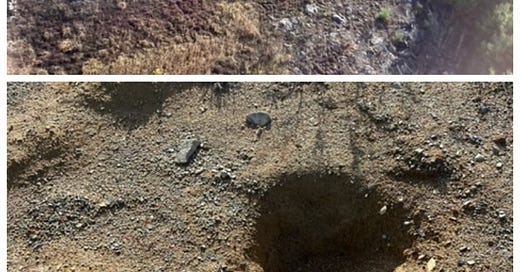



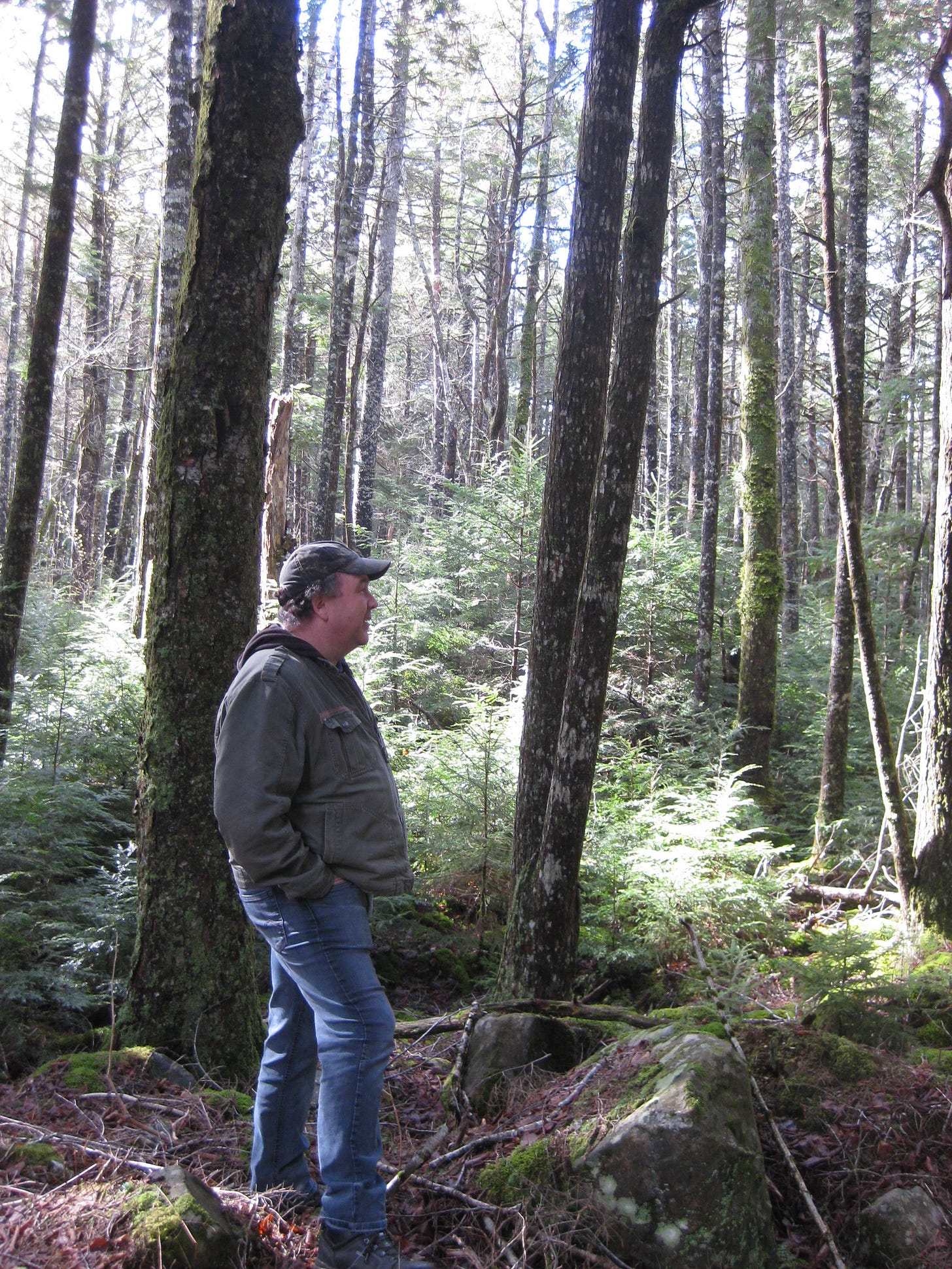
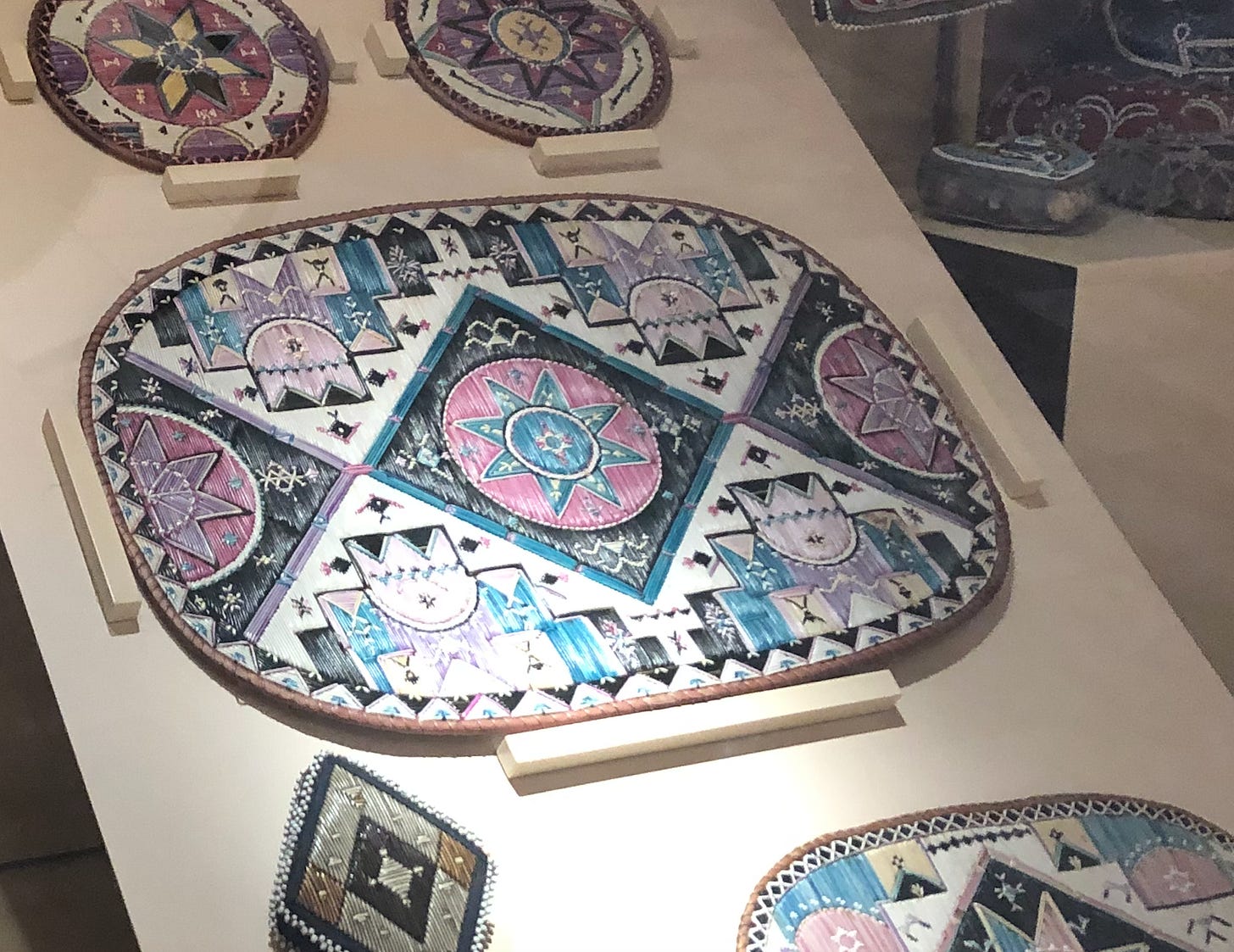

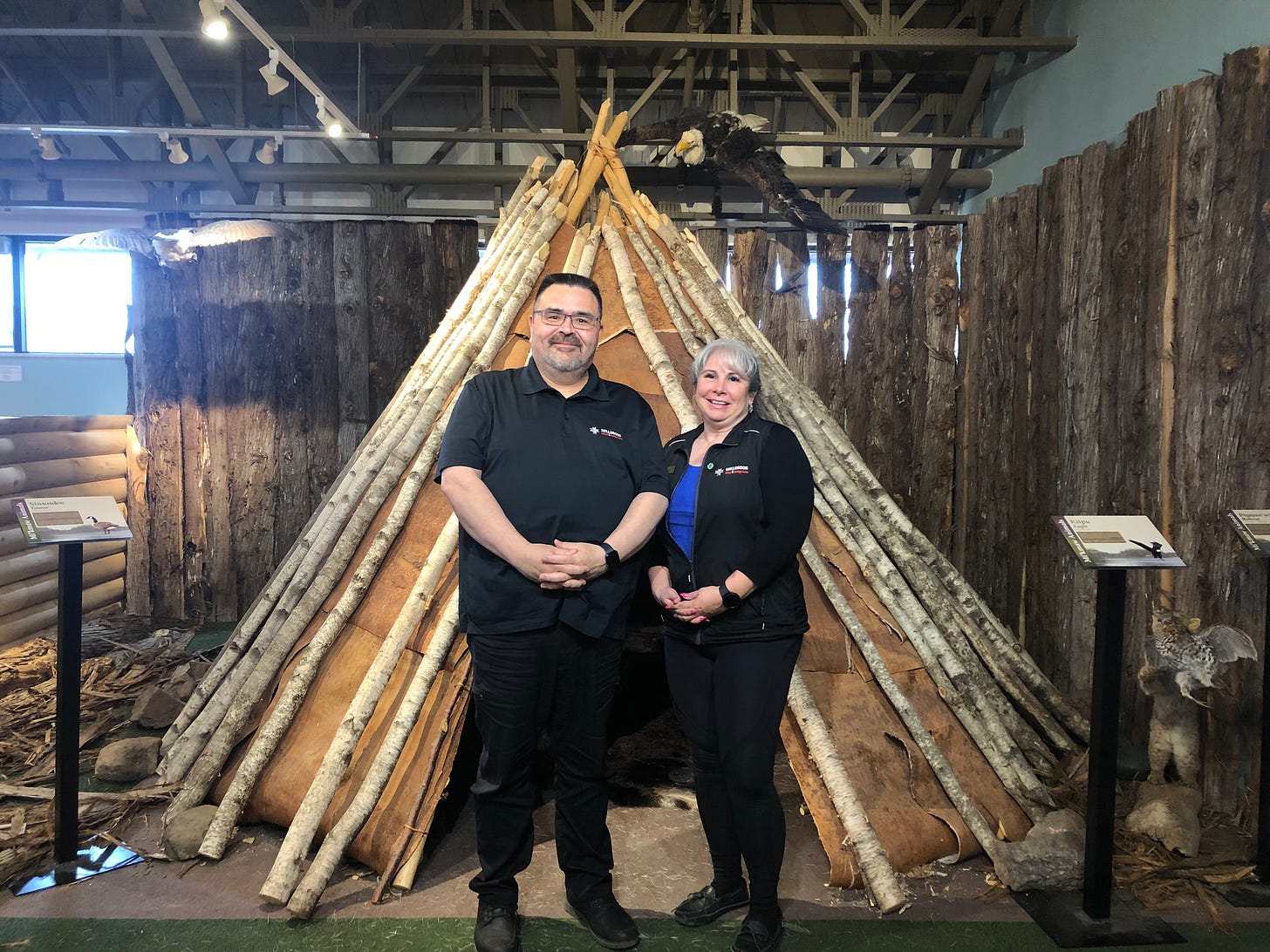
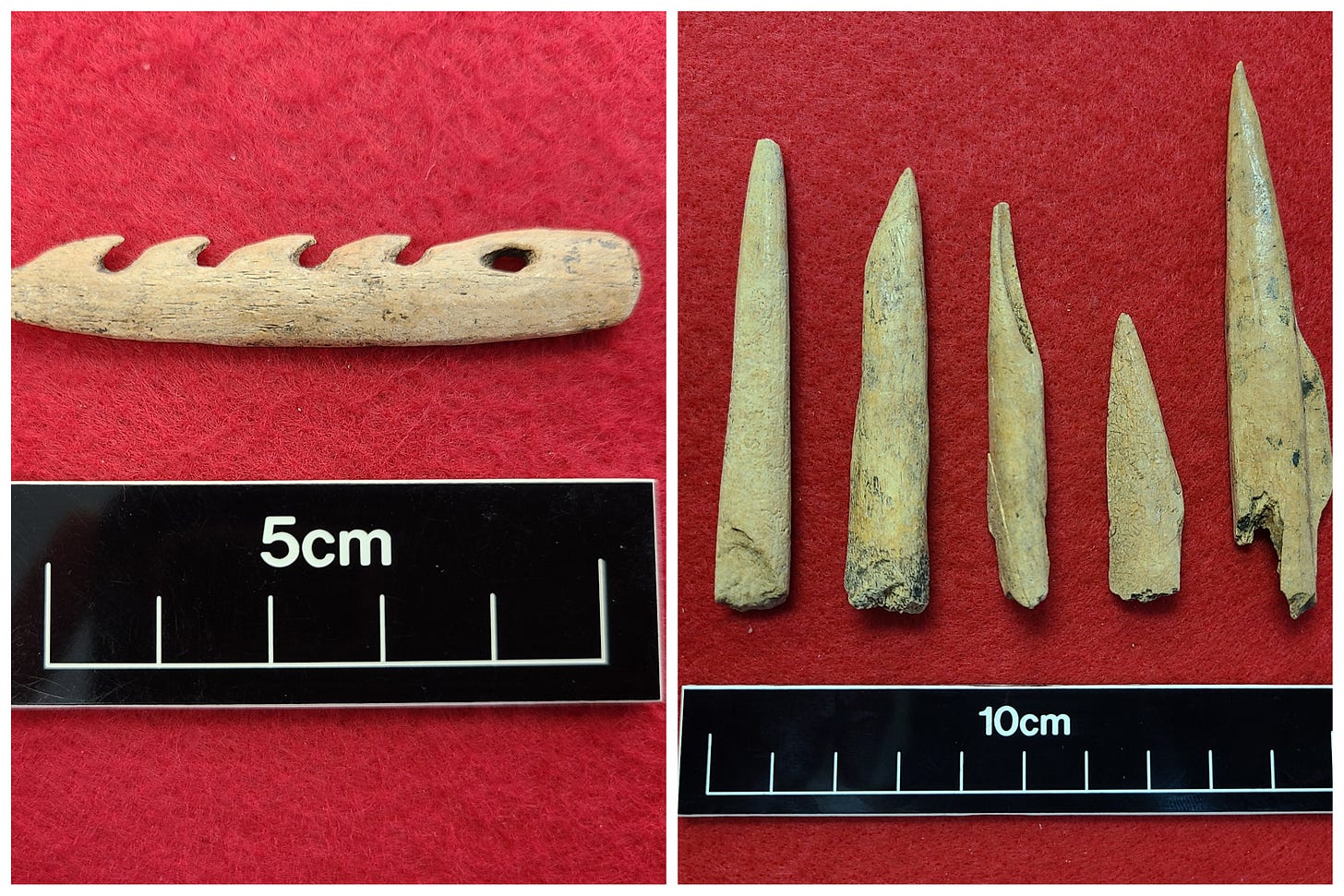
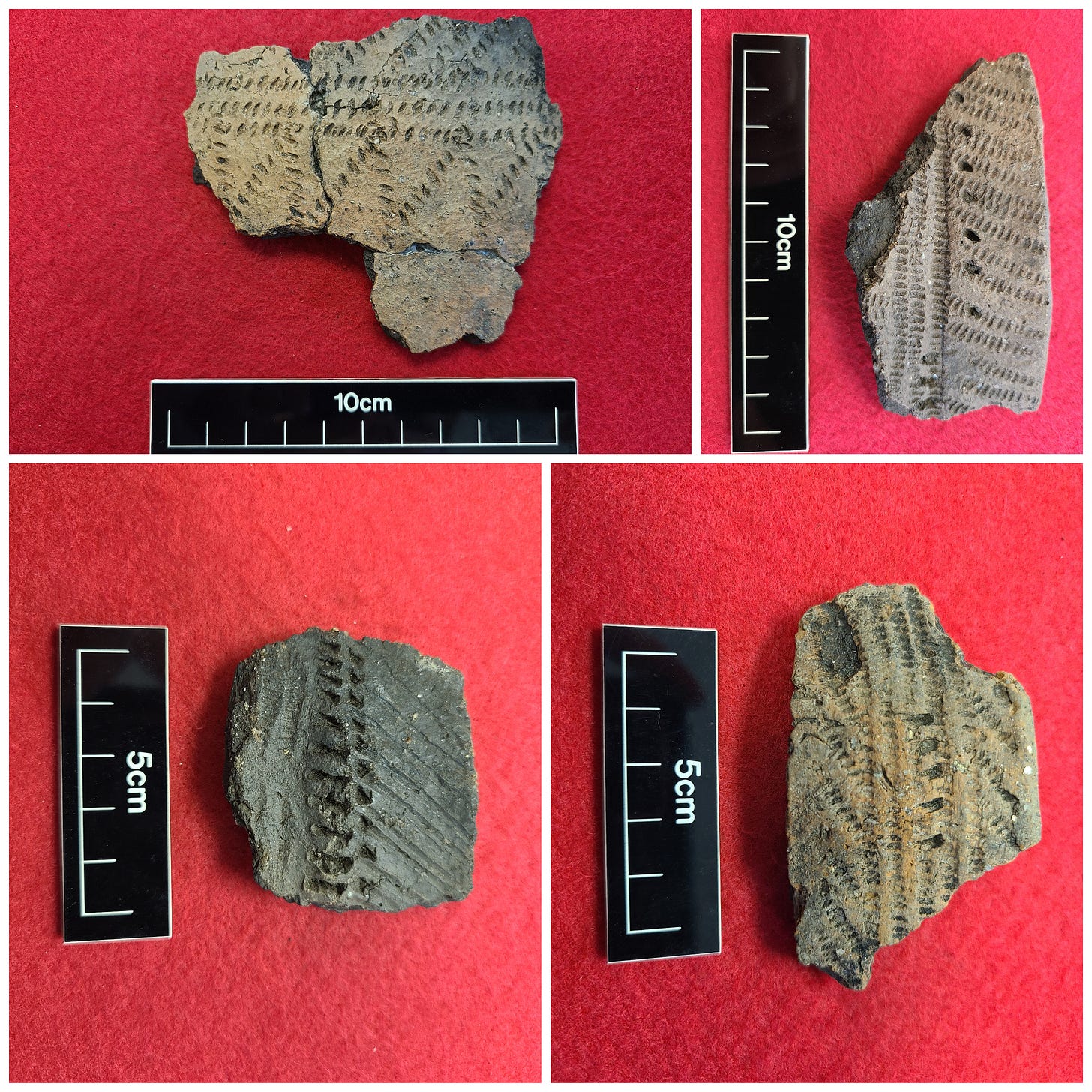
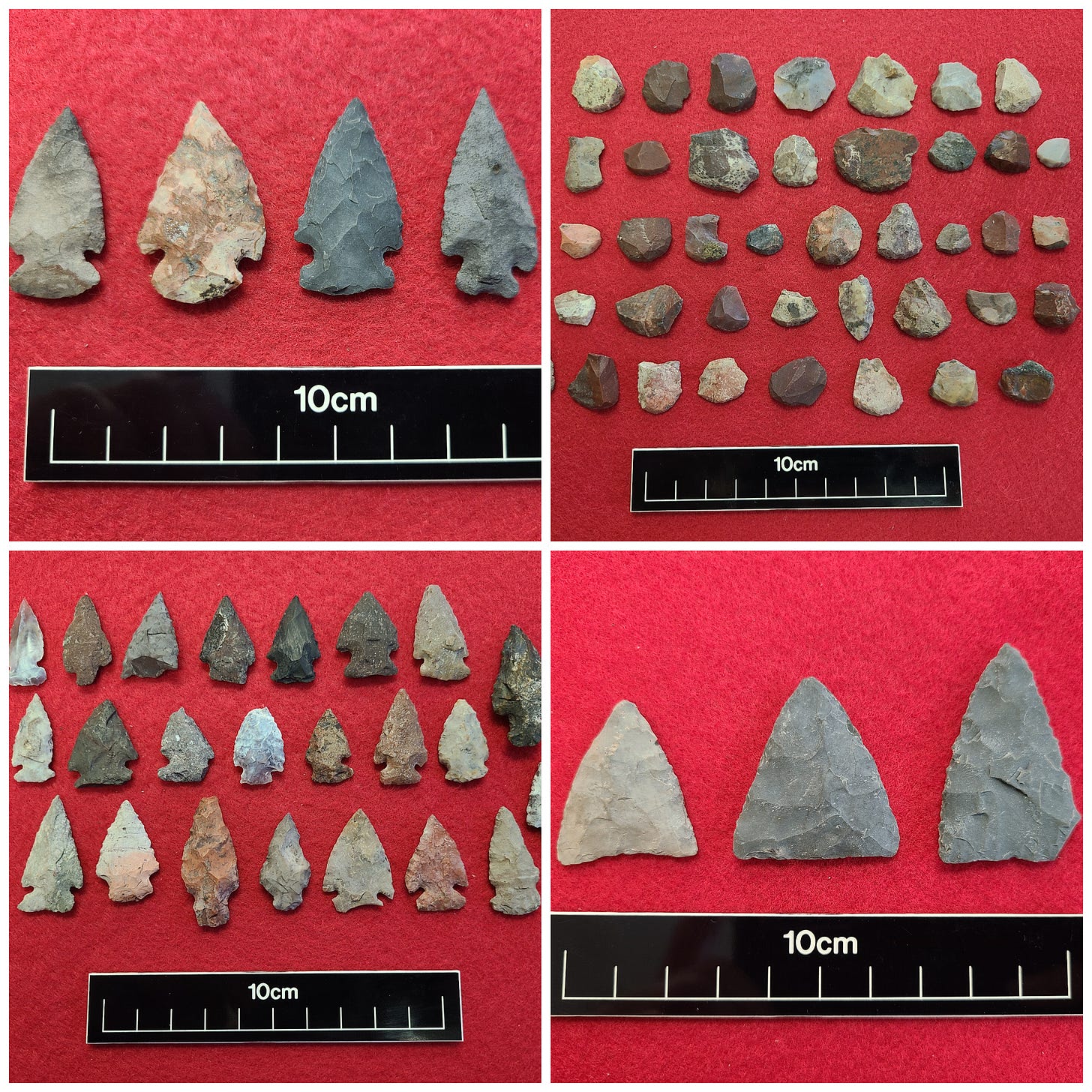
Good essay, Linda. So good to hear of cultural objects being repatriated to the Millbrook Cultural & Heritage Centre. Also, that they are being honoured there and may help to create meaningful connections such as those you've described.
Rather disappointing that repatriation laws haven't moved along very much over the past few decades. In the early 1990s, one of the courses in my graduate Art History studies was "Museums and the First Nations" at Carleton U. The issue of museum holdings, proper storage and display, and repatriation was of great concern at that time. There were a lot of issues that were being discussed -- and a lot of it came down to the funding to create and maintain collections in communities. The importance of making repatriation happen seemed quite accepted and desired at that time. I remember a guest speaker from the Smithsonian who showed slides of a group of band members from a West Coast community, coming to the Smithsonian to view masks that were about to be repatriated. She said it was very moving to reunite the masks with the people and that, even though it had been decades since the masks were removed during the Potlatch ban, members of the community had continued to pass on the knowledge of each mask, songs associated with it, to this day. It was right to see the masks go back to be with their people.
Anyhow, it's wonderful to see that the wheels of change are turning here in Mi'kma'ki.